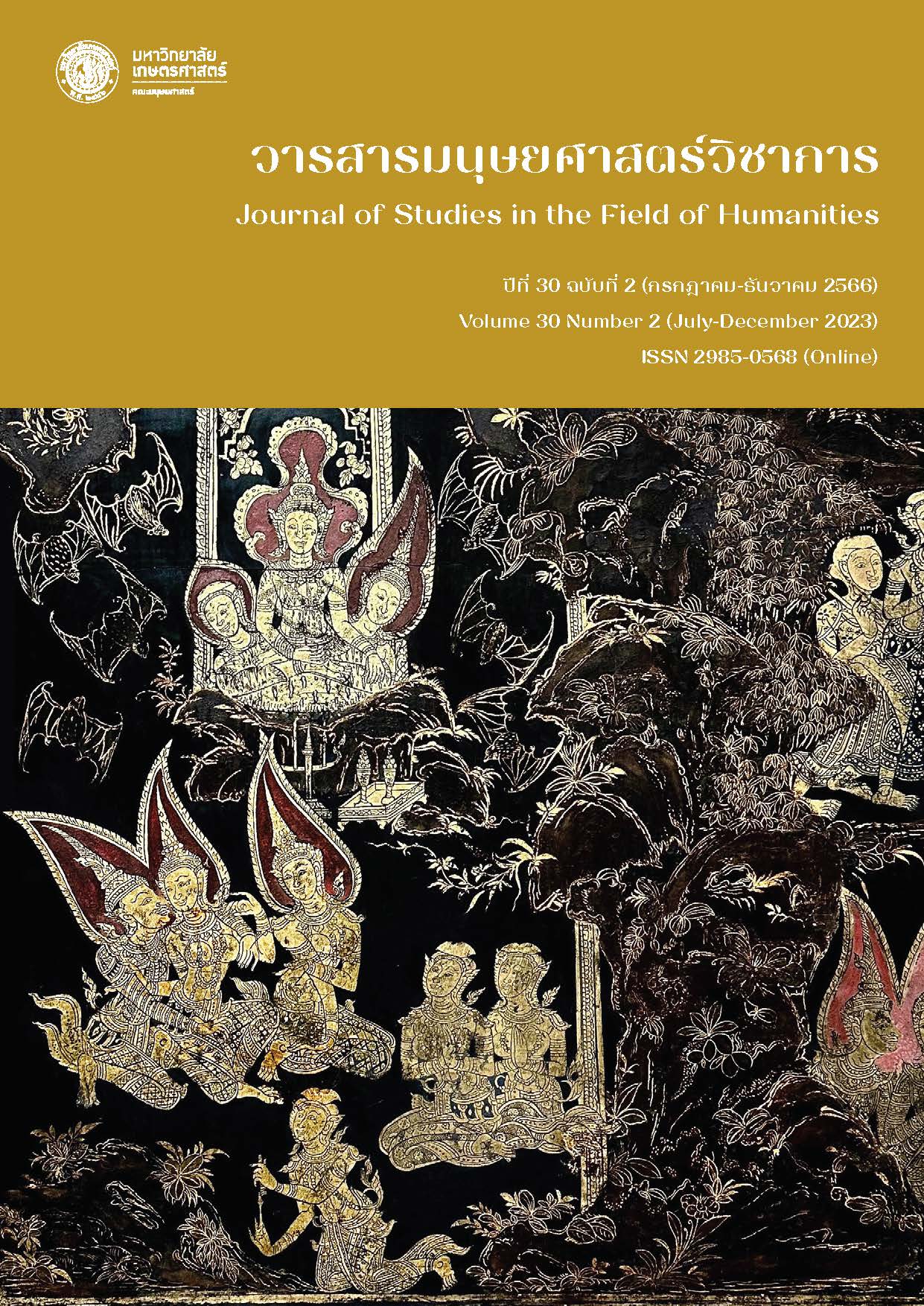The Study of Vowel Soundsㅐ[Ɛ] andㅔ[e] in Korean Language Thai Learners
Main Article Content
Abstract
This research is consequential to the research project of Paphonphat Kobsirithiwara (2020) which examined the differentiation between the vowel sounds ㅐ[Ɛ] and ㅔ[e] among Korean representative samples by employing OpenSesame program due to the equivocal pronunciation problem of the vowel sounds ㅐ[Ɛ] and ㅔ[e] which is not related to Korean rules of phonetics among Korean nowadays. This follow-up research aims to study the differentiation between vowel sound ㅐ[Ɛ] and ㅔ[e] among a Thai Korean language learners sample group. The researcher examines the representative samples from 246 Thai Korean language learners who study the Korean language as major and minor subject from 5 Thai universities. This research methodology is conducted through a listening test. The representative samples have to listen to vocabulary sound once per one vocabulary then they have to write down the vocabulary on paper (dictation). The 34 words used in dictation test are composed of ㅐ[Ɛ] and ㅔ[e] vowel sounds. Afterwards, the researcher examines the result by SPSS program.
The analysis of average accuracy in the differentiation between the vowel sounds ㅐ[Ɛ] and ㅔ[e] reveals that the average accuracy of the vowel sound ㅐ[Ɛ] among the Thai Korean language learners sample group is at 59.95% and the average accuracy of the vowel sound ㅔ[e] among the Thai Korean language learners sample group is at 57.31%. By employing Paired Sample T-Test methodology, the result reveals that the average accuracy in the differentiation between the vowel sounds ㅐ[Ɛ] and ㅔ[e] among the Thai Korean language learners sample group is higher than the Korean representative sample group significantly. But overall, Thai Korean Language Learners are unable to distinguish between the vowel sounds ㅐ[Ɛ] and ㅔ[e] like native Korean speakers.
Article Details

This work is licensed under a Creative Commons Attribution-NonCommercial-NoDerivatives 4.0 International License.
References
เทียนมณี บุญจุน. (2548). สัทศาสตร์: ระบบเสียงในภาษาอังกฤษและภาษาไทย. กรุงเทพฯ: โอ.เอส. พริ้นติ้ง เฮ้าส์.
ปพนพัชร์ กอบศิริธีร์วรา. (2560). การศึกษาการแยกแยะเสียงสระㅐ[Ɛ] และเสียงสระ ㅔ[e] ในเจ้าของภาษาชาวเกาหลีด้วยโปรแกรม OpenSesame. วารสารมนุษยศาสตร์วิชาการ, 24(2), 139-160.
ปพนพัชร์ กอบศิริธีร์วรา. (2563). แนวทางการพัฒนาตำราเรียนภาษาเกาหลีในส่วนคำศัพท์ กรณีศึกษาผู้ศึกษาวิชาภาษาเกาหลีเพื่อการสื่อสาร I คณะมนุษยศาสตร์ มหาวิทยาลัยเกษตรศาสตร์. วารสารมนุษยศาสตร์วิชาการ, 27(1), 125-159.
Brown, H. D. (2014). Principles of Language Learning and Teaching. New York: Pearson Education.
Cai, H. (2012). E-learning and English Teaching. IERI Procedia 2012 International Conference on Future Computer Supported Education, August 22-23, 2012, Fraser Place Central - Seoul, 2, 841-846.
Luedee, N. (2012). 태국인 초급 학습자의 한국어 장애음 발음의 실험음성학적연구. 한양대학교 일반대학원 석사학위논문.
Odlin, T. (1989). Language Transfer: Cross-linguistic Influence in Language Learning. Cambridge: Cambridge University Press.
분릿 코헹. (2015). 태국인 한국어 학습자 발음교육 연구 – 한국어 발음 지각 및 산출 실험을 활용하여-. 경희대학교 일반대학원 박사학위논문.
이선웅ㆍ이정화ㆍ서경숙. (2020). 한국어 어휘 교육론. 한국문학사.
허용ㆍ김선정. (2006). 외국어로서의 한국어 발음 교육론. 박이정.


